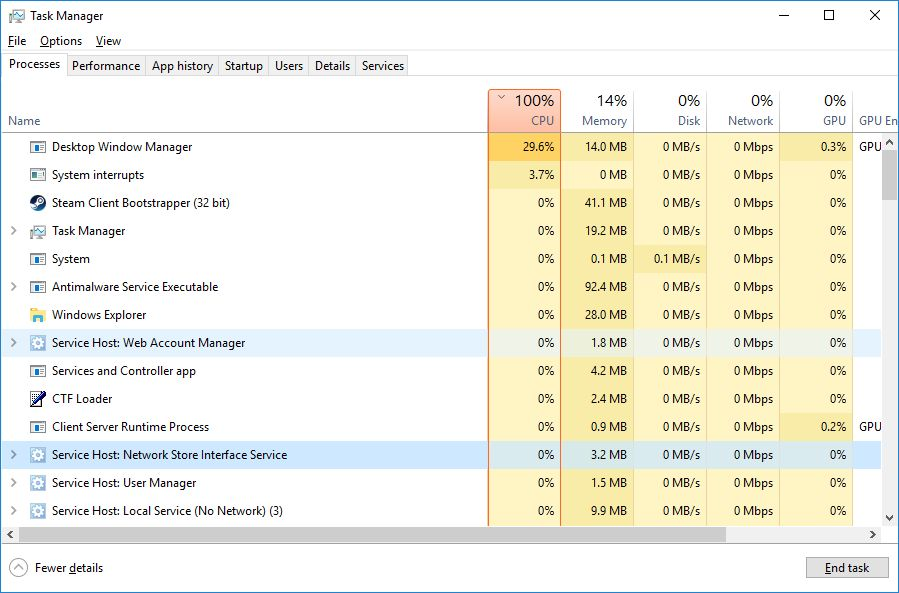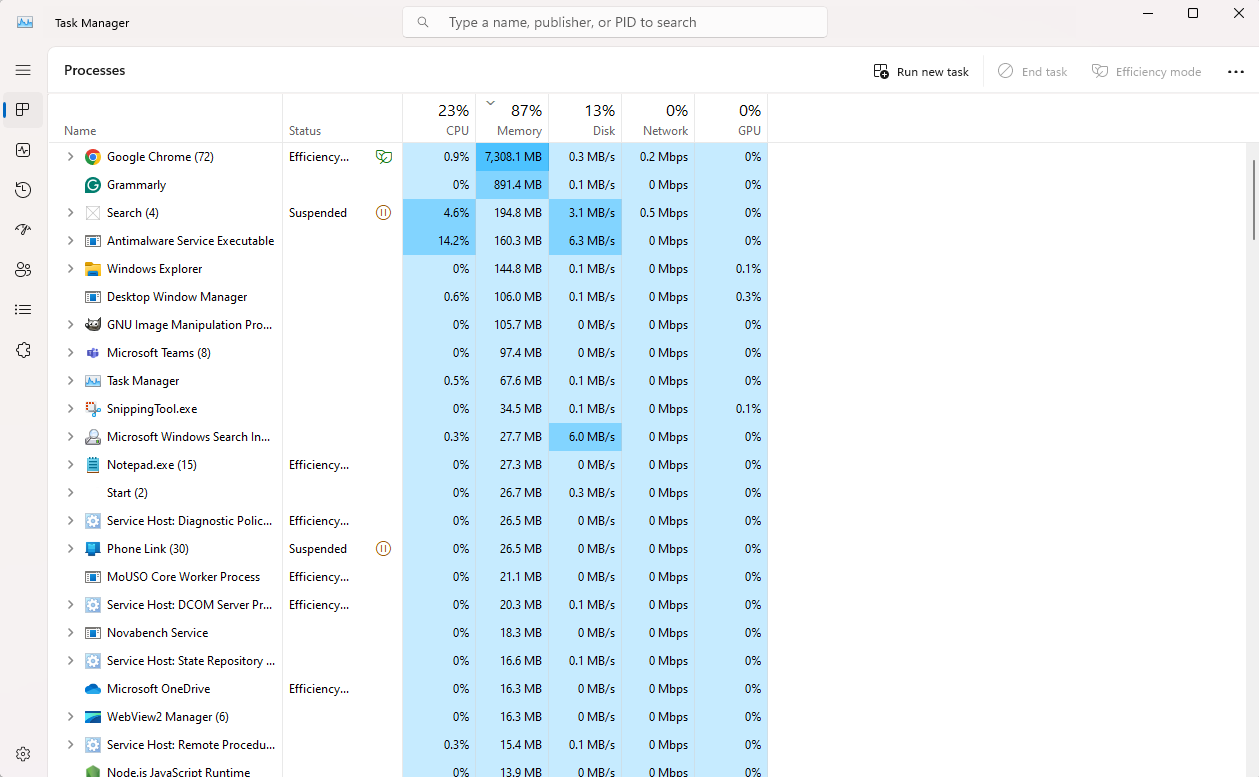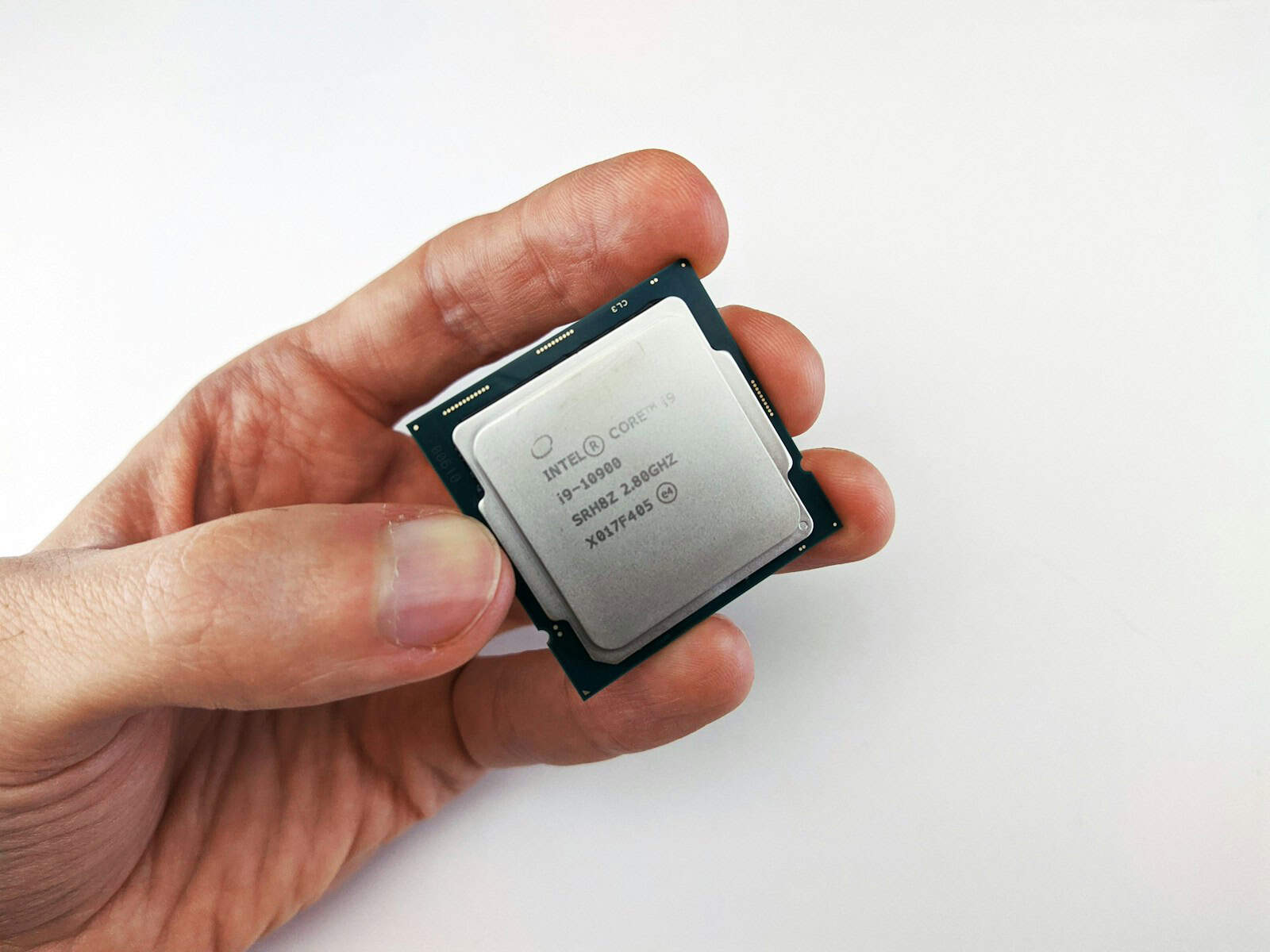A constantly high CPU usage can slow down your computer and cause frustration – especially since it’s not always obvious what the issue is. Many factors can lead to 100% CPU usage, including malware, system errors, or resource-intensive programs running in the background. This issue often makes your computer run hot and noisy, and in some cases can be dangerous (and strenuous) to your hardware.
To check CPU usage in Windows, open Task Manager. Look for processes using a lot of CPU power. Sometimes, a single program hogs all the resources. Other times, many small processes add up to 100% usage. Fixing this problem can make your computer run much faster.
Rebooting your computer can often help. It clears out temporary files and restarts processes. If that doesn’t work, you may need to end specific tasks or update your drivers. In some cases, you might have to scan for malware or fix system errors.

Understanding High CPU Usage
Seeing your CPU usage consistently at 100% is a sure sign that something’s not right. It can lead to slowdowns, freezes, and an overall sluggish computer experience. But don’t worry, there are ways to fix it! Let’s explore some of the common causes of high CPU usage and how to troubleshoot them.
1. Resource-Hungry Applications
Certain applications, like video editing software, 3D rendering programs, or even some games, demand a lot of processing power. If you’re running one of these programs, it’s normal to see your CPU usage spike. However, if your CPU stays at 100% even when you’re not actively using a demanding application, there might be another issue at play.
Tips for Managing Resource-Hungry Applications
- Close Unnecessary Applications:** Close any applications you’re not actively using to free up CPU resources.
- Limit Browser Tabs:** Each browser tab you have open consumes some CPU power. Try closing tabs you don’t need.
- Monitor Background Processes:** Some applications run in the background and might be using a significant amount of CPU power. You can use the Task Manager (Windows) or Activity Monitor (Mac) to identify and close these processes.
2. System Overload
If you’re trying to do too many things at once, your CPU might become overwhelmed. This is especially true for older or less powerful computers. Try to avoid running multiple demanding applications simultaneously.
3. Malware or Viruses
Malware or viruses can consume a lot of CPU resources, causing your computer to slow down. Make sure you have a good antivirus program installed and run regular scans to detect and remove any threats.
4. Outdated Drivers
Outdated or corrupted drivers can also cause high CPU usage. Make sure your drivers, especially your graphics drivers, are up to date.
5. Operating System Issues
Sometimes, problems with your operating system can lead to high CPU usage. Make sure your operating system is up to date and consider running a system file checker to repair any corrupted files.
6. Hardware Issues
In rare cases, high CPU usage might be caused by a hardware problem, such as a failing CPU or insufficient cooling. If you suspect a hardware issue, you might need to consult a computer technician.
Troubleshooting Tips
| Problem | Possible Solution |
|---|---|
| High CPU usage when idle | Check for malware, close background processes, update drivers |
| High CPU usage when gaming | Lower game settings, close unnecessary applications, upgrade hardware |
| High CPU usage when browsing the web | Limit browser tabs, disable browser extensions, clear browser cache |
| High CPU usage after Windows update | Run system file checker, uninstall recent updates, roll back to a previous version of Windows |
| High CPU usage with specific application | Update the application, reinstall the application, check for compatibility issues |

Key Takeaways
- High CPU usage can be caused by malware, system errors, or resource-heavy programs
- Check Task Manager to see which processes are using the most CPU power
- Rebooting, ending tasks, or scanning for malware can help fix high CPU usage
Identifying High CPU Usage in Windows
Windows Task Manager helps you spot programs using too much CPU power. You can check which processes are running and how much CPU they’re using.
Using Task Manager to Monitor CPU Resources
To open Task Manager, press Ctrl + Shift + Esc. Click “More details” if needed. The Processes tab shows running programs and their CPU use. Look at the “CPU” column to see which ones use the most.
Sort by CPU usage to find the top consumers. Normal use is usually under 80%. If it’s always at 100%, there’s likely a problem.
Some processes that often use a lot of CPU are:
- Web browsers with many tabs open
- Antivirus scans
- Video editing software
- Games
Understanding Processes and Services
Processes are programs running on your computer. Services are background tasks that help Windows work.
Key processes to watch:
- System Idle Process: This should use most of your CPU when idle
- svchost.exe: Runs Windows services
- WMI Provider Host: Manages system info
If these use too much CPU, it can mean:
- A virus or malware
- Outdated drivers
- Windows updates running
To check a process, right-click it and select “Search online”. This can help you learn if it’s normal or a problem.
Common Causes of High CPU Usage
High CPU usage often stems from several key factors that can significantly impact system performance. These include background processes, malware infections, and certain Windows features.
The Impact of Background Processes
Background processes can eat up CPU resources without users noticing. Many apps start up when Windows boots and keep running in the background. This can slow down your computer.
To check background processes:
- Open Task Manager
- Click “More details”
- Look at the “Processes” tab
Some common culprits:
- Web browsers with many open tabs
- Antivirus scans
- Software updates
- File indexing
Try closing unused apps and tabs. You can also stop some programs from starting up with Windows:
- Open Task Manager
- Go to “Startup” tab
- Disable unneeded programs
Malware and Virus-Related CPU Consumption
Malware and viruses can cause high CPU usage. They often run hidden processes that use up system resources. Signs of infection include:
- Sluggish performance
- Unexpected pop-ups
- Strange network activity
To protect your system:
- Keep antivirus software up-to-date
- Run regular scans
- Avoid clicking suspicious links or downloading unknown files
If you suspect malware:
- Run a full system scan with Windows Defender or another trusted antivirus
- Use anti-malware tools for a deeper scan
- Consider resetting Windows as a last resort
Windows Features and Systems Processes
Some Windows features can lead to high CPU usage. Windows 10 and 11 have built-in processes that may temporarily spike CPU use.
Examples include:
- Windows Update
- Cortana (digital assistant)
- Windows Defender real-time protection
To manage these:
- Open Settings
- Go to “Update & Security”
- Adjust Windows Update settings
For Cortana:
- Type “Cortana settings” in the search bar
- Turn off features you don’t use
Windows Defender is important for security. Instead of turning it off, try scheduling scans for times when you’re not using the computer.
Check Task Manager to see which Windows processes are using the most CPU. Some, like “System” or “Windows Explorer,” are normal and shouldn’t be stopped.
Troubleshooting and Mitigating 100% CPU Usage
High CPU usage can slow down your computer and cause overheating. These steps can help fix the problem and boost performance.
Adjusting Windows Power Options
Open the Control Panel and click on “Power Options”. Choose a balanced or high-performance plan to optimize CPU usage. Click “Change plan settings” next to your chosen plan. Select “Change advanced power settings”.
Find “Processor power management” in the list. Expand it and adjust the “Minimum processor state” to a lower percentage, like 5%. This lets your CPU use less power when idle.
Set “Maximum processor state” to 100% for full performance when needed. Click “Apply” and “OK” to save changes. Restart your computer to see if CPU usage improves.
Updating Drivers and Windows
Old or faulty drivers can cause high CPU usage. Open Device Manager by right-clicking the Start button and selecting it from the menu. Look for devices with yellow exclamation marks.
Right-click these devices and choose “Update driver”. Select “Search automatically for updated driver software”. If Windows can’t find a new driver, check the device manufacturer’s website.
Keep Windows up-to-date too. Go to Settings > Update & Security > Windows Update. Click “Check for updates” and install any available updates. Restart your PC after updating to apply changes.
Optimizing Windows Settings for Better Performance
Open the Start menu and type “Performance”. Click “Adjust the appearance and performance of Windows”. In the “Visual Effects” tab, select “Adjust for best performance”. This turns off fancy visual effects that can use extra CPU power.
Disable startup programs that you don’t need. Open Task Manager and go to the “Startup” tab. Right-click programs you don’t want to start with Windows and select “Disable”.
Check your antivirus settings. Some scans can use a lot of CPU power. Schedule scans for times when you’re not using your computer. You can also try turning off real-time protection briefly to see if it helps CPU usage.







